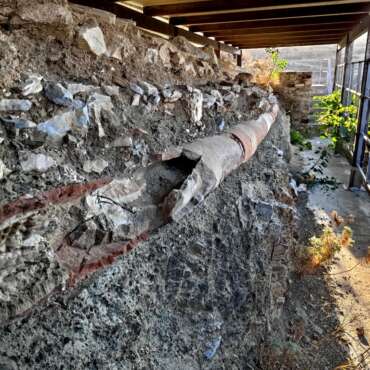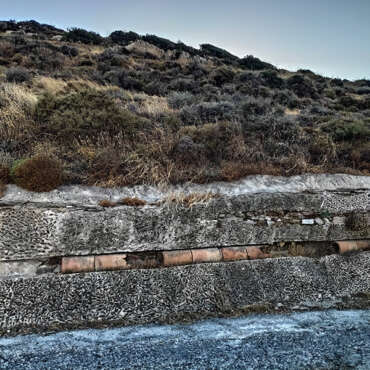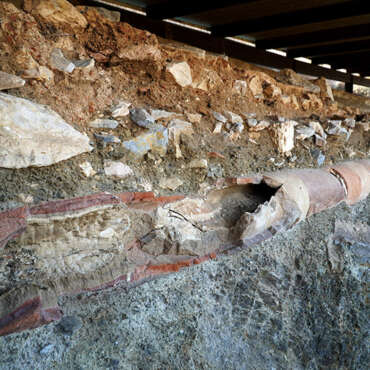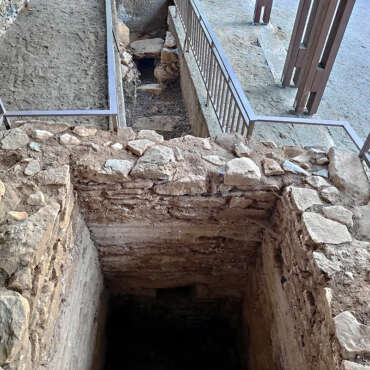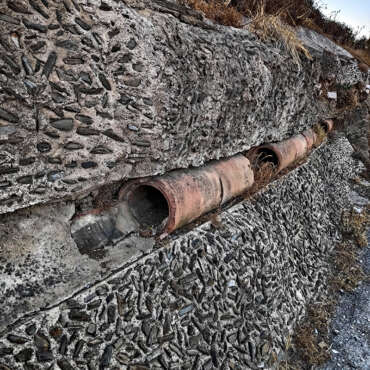Aqueduct
Aqueduct
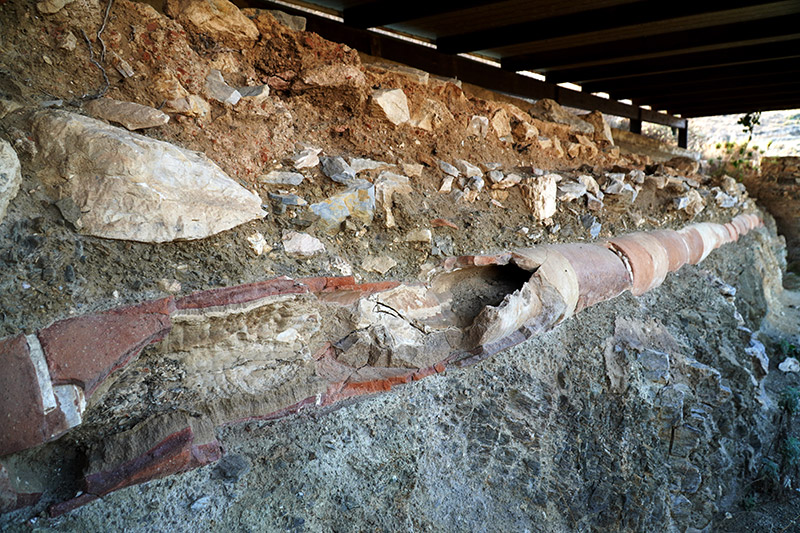 The remains of the ancient aqueduct have always been known to the locals. Unfortunately, since it was not the object of state care, they were not valued as important relics of the past and were treated either with ignorance and negligence or as obstacles, resulting in extensive destruction of parts of them by public works and individuals until recently. A university team recorded and documented the surviving aqueduct relics throughout its course, emphasizing their cultural value. However, the most important part, a tunnel for the exit of the aqueduct from the Flerio basin, was not known and was discovered during the first years of the protection and management project undertaken by the University of Athens.
The remains of the ancient aqueduct have always been known to the locals. Unfortunately, since it was not the object of state care, they were not valued as important relics of the past and were treated either with ignorance and negligence or as obstacles, resulting in extensive destruction of parts of them by public works and individuals until recently. A university team recorded and documented the surviving aqueduct relics throughout its course, emphasizing their cultural value. However, the most important part, a tunnel for the exit of the aqueduct from the Flerio basin, was not known and was discovered during the first years of the protection and management project undertaken by the University of Athens.
The polis – kratos of Naxos built, during the late 6th BC, a large technical public project, an aqueduct about 11 km long, which ensured the water supply of the ancient city, where the modern city is today, and the irrigation of all arable land along its route, since it followed the border between higher rocky areas and lower fertile land. This early aqueduct was built with a line of clamped clay pipes placed in a ditch, which was opened in the soil or on the rock, and which, to get out of the Flerio basin, had to quarry for 220 meters the hill that closes it to the north. The type of clay pipes, the type of tunnel, and the relations of Naxos with other Greek cities during the 6th BC allow the hypothesis that this work took place during the tyranny of Lygdamis. During the 1st BC, this aqueduct was replaced by the new technique that prevailed in the Roman-occupied world. Following the same line with small deviations, the new aqueduct transported the water with a built-in groove coated with hydraulic mortar and covered with stone slabs, which ran underground elsewhere in the old moat, somewhere near it and elsewhere above ground on a stone pier. There were also periods when the groove was a simple trench in the soft natural rock-lined with mortar. The older aqueduct must have ended at the citadel on the hill of Kastro, while the new line ended at an above-ground, arched fountain building in the market area of the old city of Naxos, which is still intact, partially buried, the "Trani Fountana". The aqueduct in this phase operated for a short time. The operation of this last project stopped in the 8th AD, during the difficult period of the Arab invasions of the islands.
Source Text: "Preservation and promotion of the ancient aqueduct of Melanos Naxos, an ancient sanctuary at the springs of Melanes and statues in the ancient quarries of the area". Athens 2010.

